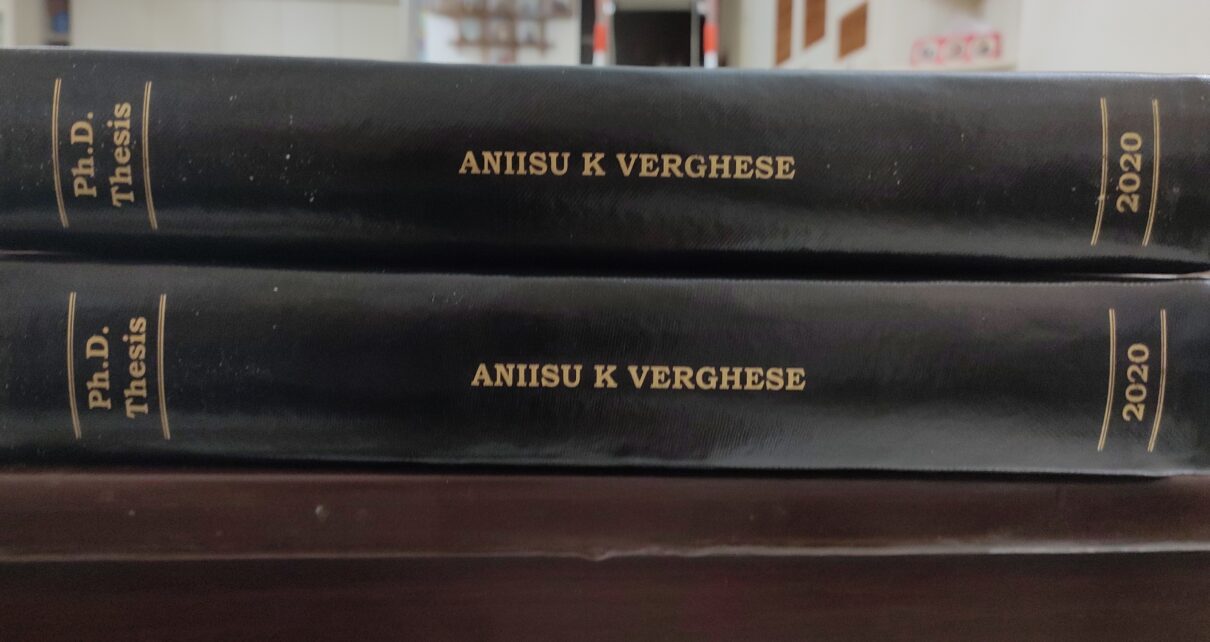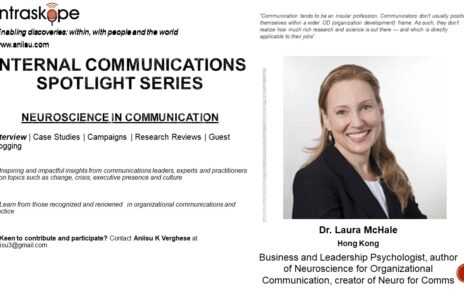Delighted to share that, by the Grace of God, I completed my PhD in organizational communications (HR&OB) earlier this year.
As an author, adjunct faculty, speaker, trainer and communications coach, I had enrolled in this program in 2015 with Alliance University, India because I wanted to blend my passion for research with my experience of over two decades in corporate and employee communications.
My mixed method research looked at the relationships between communication satisfaction with knowledge workers’ identification and their citizenship behaviors. Kudos to my guide Dr. Pratima Verma and the doctoral committee for their guidance and support.
A quick summary of my study:
At the workplace, every employee is given a job role and he or she is expected to perform to that assignment. However, there are extra-role behaviors which every employee plays aren’t counted and rewarded and yet contribute to the social fabric of the organization’s progress and impact. Take for example, an employee who helps another colleague when they struggle to cope with work. Or, someone who stays back late to complete tasks. Or, another who voices his or her support when external stakeholders comment negatively about the firm he or she works for. All these are actions that serve as the lubricant for the organization to thrive. However, very little is understood about how communications directed at employees inspires and engages them to go over and above. While there are some indications that predict job satisfaction with organizational citizenship behaviors, we have limited understanding of the influence of employees’ satisfaction with communications in relation to the way they identify and go over and above. This can be useful because increasingly we operate in work environments where the ability of employees to go ‘over and above’ can be a strategic differentiator for leaders and organizations.
- Which elements of communications influence employees to identify and put in extra effort at work over and beyond their in-role duties?
- How do the constructs interact with each other? Does job level or experience influence the ability of communication satisfaction to improve identification of employees?
- How does identification influence the way employees decide to do more than what they are rewarded for?
All these were studied in the context of the knowledge industry in India. Using structural equational modelling and a phenomenological approach to appreciating insights from in-depth interviews with employees and their managers, my research explored the relationships between these constructs.
In my study, I discovered that communication satisfaction does influence identification positively. Likewise, identification influences citizenship behaviors weakly at the construct level. However, there was a negative influence of communication satisfaction with citizenship behaviors. The critical incident technique uncovered the lived experiences of staff as they were exposed to different forms and types of communications within. The interviews highlighted the value of engaging with staff at three levels: personal, team and organizational. When, communication at all three levels were satisfactory, employees were more inclined to feel connected and do more for their organization. The negative relationship is possibly due to numerous changes employees face each day and also the pressure to continually to extra, leading to workload, job creep and compulsion to compete with others.
The results indicate that there is a clear evidence that the primary function of managers needs to be communicating effectively and coherently and inspiring employees to go the extra mile. However, there is a risk of over communicating organizational information that prescribes extra-role behaviors because that can lead to negative fallouts. Employees may get overwhelmed and burned out trying hard to keep pace with organizational expectations. Striking the right balance is importance and this can be further studied in a wider context, beyond just knowledge workers.
There is impetus for organizational efficiency and performance, suggesting that the investment in supervisor communication training and review of culture assimilation within the organization should be the focus of leaders. In addition, the tone, degree and scale of organizational information and horizontal communications must be given cognizance when targeting employees. The practical application of these attributes was not evident prior to examining the critical incidents through interviews. The frequent occurrence of organizational changes, supervisor situations and the reliance on delivering key messages effectively to stakeholders provides evidence that managing employee relations is essential for management.
Senior leaders, human resources professionals and communications experts need to examine their communication programs to determine which aspects of their communication interventions can be made more effective by creating an environment where communication is well received, and subordinates reciprocate when engaging managers.
The journey has been enriching for the following reasons:
- I have a better appreciation and understanding of academic research and writing
- There is a whole unexplored world of research which continues to evolve with such brilliant scholars whom I’ve had the opportunity to interact with
- Got the chance to present and publish papers and a book chapter (in print) along the way.
- Developed an affinity for designing and developing coursework which will bridge the gap between academia and industry needs
Presentations made:
◦24th International Public Relations Research Symposium CSR in Hypermodern Times. BledCom June-July 2017 Bled, Slovenia ISBN: 978-961-235-820-4
◦The 6th International Conference for Managing HR at the workplace, SDIMD, Mysore (Dec 2017) ISBN: 978-93-83302-27-7
◦Alliance Management Studies International Conference (AMSICON) GLOBAL CHALLENGES AND LOCAL PROSPECTS
11-13 APRIL, 2019
◦Upcoming in 2021: book chapter on strategic change communication in forthcoming book, “Current Trends and Issues in Internal Communication – Theory and Practice” (Palgrave Macmillan).
Papers and abstracts published:
◦Enhancing Employee Commitment to Change through Uncertainty Reduction: The Role of Channel Selection and Communication Transparency. Linjuan Rita Men, University of Florida, Marlene Neill, Baylor University, Cen April Yuen, University of Florida, and Aniisu K. Verghese, Sabre Corporation, India. Institute for Public Relations W. Ward White Award for Top Three Papers of Professional Significance
Verghese, A. . (2020). Organizational Citizenship Behaviours – Antecedents, Outcomes & Paradoxes: A Literature Review Ushus Journal of Business Management 19 (4), 27-37
◦Verghese, A. K. (2017). Internal Communication: Practices and Implications. SCMS Journal of Indian Management, 14(3). ISSN 0973- 3167
◦Combining Forces for Corporate Social Responsibility (CSR) – An Investigation Of Inter-Organizational Collaboration. http://www.bledcom.com/sites/default/files/BLEDCOM2017-Book-of-Abstracts.pdf
If this subject interests you, I am happy to share more details!
Keen to continue further research in this and allied areas wherever my experience and expertise can be put to best use. My research interests are employee communications, personal branding, corporate social responsibility, organizational citizenship behaviors and digital media.
Alliance University is #2 in Bengaluru after IIM-B (MHRD, Govt. of India – NIRF Rankings 2020). A private University established in Karnataka State by Act No. 34 of 2010, it is notified under the list of Private Universities maintained by the University Grants Commission (UGC), New Delhi.
More about the university is here: https://www.alliance.edu.in/


